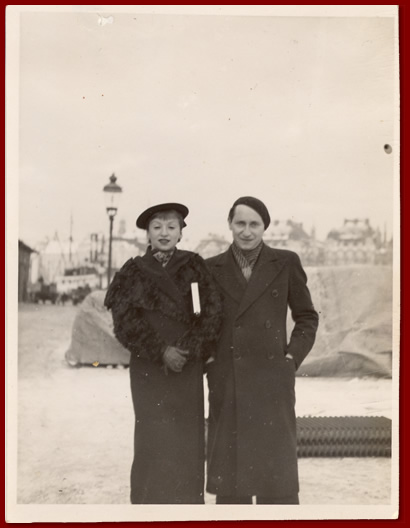Dr. Dieter Distl:
 Pictures of expulsion, escape, and emigration are everywhere these days. The subject as such, regardless of its role in art history, is usually brought into connection with Nazi Germany. Nowhere else have leading scientists and artists been driven away and persecuted with such persistence.
Pictures of expulsion, escape, and emigration are everywhere these days. The subject as such, regardless of its role in art history, is usually brought into connection with Nazi Germany. Nowhere else have leading scientists and artists been driven away and persecuted with such persistence.
Although literature and music found their way back into Germany quite easily, there was no intensive reception of works of fine art by exiled artists. Occasionally, a few famous names got a chance (most recently in 1998 in an exhibition in Berlin entitled Exile, Escape and Emigration of European Artists from 1933 to 1945) 1 but many others have fallen into oblivion in this country.
It was the idea of John Spalek, an ardent researcher in the field of émigré art, to organise a series of exhibitions showing the work of exiled artists. He was the first to get in touch with Eric Isenburger’s widow and the exceptional collector Sheila Low-Beer without whose valuable cooperation this exhibition would not have been possible.
Jula and Eric Isenburger were young artists when Hitler came to power – she was in her mid-twenties, he was in his early thirties. The foresight of Wolfgang Gurlitt, a gallery owner in Berlin, quite probably saved their lives.
It is to the enthusiasm, continued interest, and artistic meticulousness of Sabine Kammerl that we owe the recent discovery of early works of Eric Isenburger found in the gallery owner’s estate, works that have survived the war and will now be shown in public for the first time in seventy years. She used a big part of her six months scholarship to New York – the most highly paid scholarship of the Bavarian government – to prepare this exhibition. That she did not hesitate to divide up her time between the research for the exhibition and her own artistic projects, is typical of the fascination that the multifarious life of the exiled artists Jula and Eric Isenburger holds for everyone who hears about them. Meeting Jula Isenburger in person and feeling her tremendous charisma was the main reason for Sabine Kammerl to take on most of the work, she says. During the months of research and preparation the support of collector Sheila Low-Beer proved to be invaluable.
When this catalog merely mentions that Eric Isenburger was a prisoner-of-war in the camp Les Milles in the South of France, where he made drawings of the other prisoners and before escaping in 1941 to the USA via Spain and Portugal together with his wife, it nevertheless sheds some light on all the destinies we only know out of books: writer Walter Hasenclever committed suicide in Les Milles because he had lost all hope; Lion Feuchtwanger2, Heinrich and Golo Mann3 could only escape with help from outside. Alma Mahler-Werfel describes their arduous journey through the Pyrenees in her book My Life. This journey cost Walter Benjamin his life and meant survival for Jula and Eric Isenburger.
Lion Feuchtwanger closes his report The Devil in France with the words: “I was to learn that man’s stupidity and malice are as wild and deep as the Seven Seas. But I also had the good fortune to learn that the sea wall erected by a minority of good and wise people was growing higher and stronger every day.”
With this exhibition we would like to contribute to the strength of this sea wall.
Dieter Distl, Neuburg, 1999
from “Eric Isenburger 1902-1994 Ausgewählte Werke Städtische Galerie im Rathausfletz Neuburg an der Donau 2. Mai – 13.Juni 1999” (Neuburg 1999), p. 11